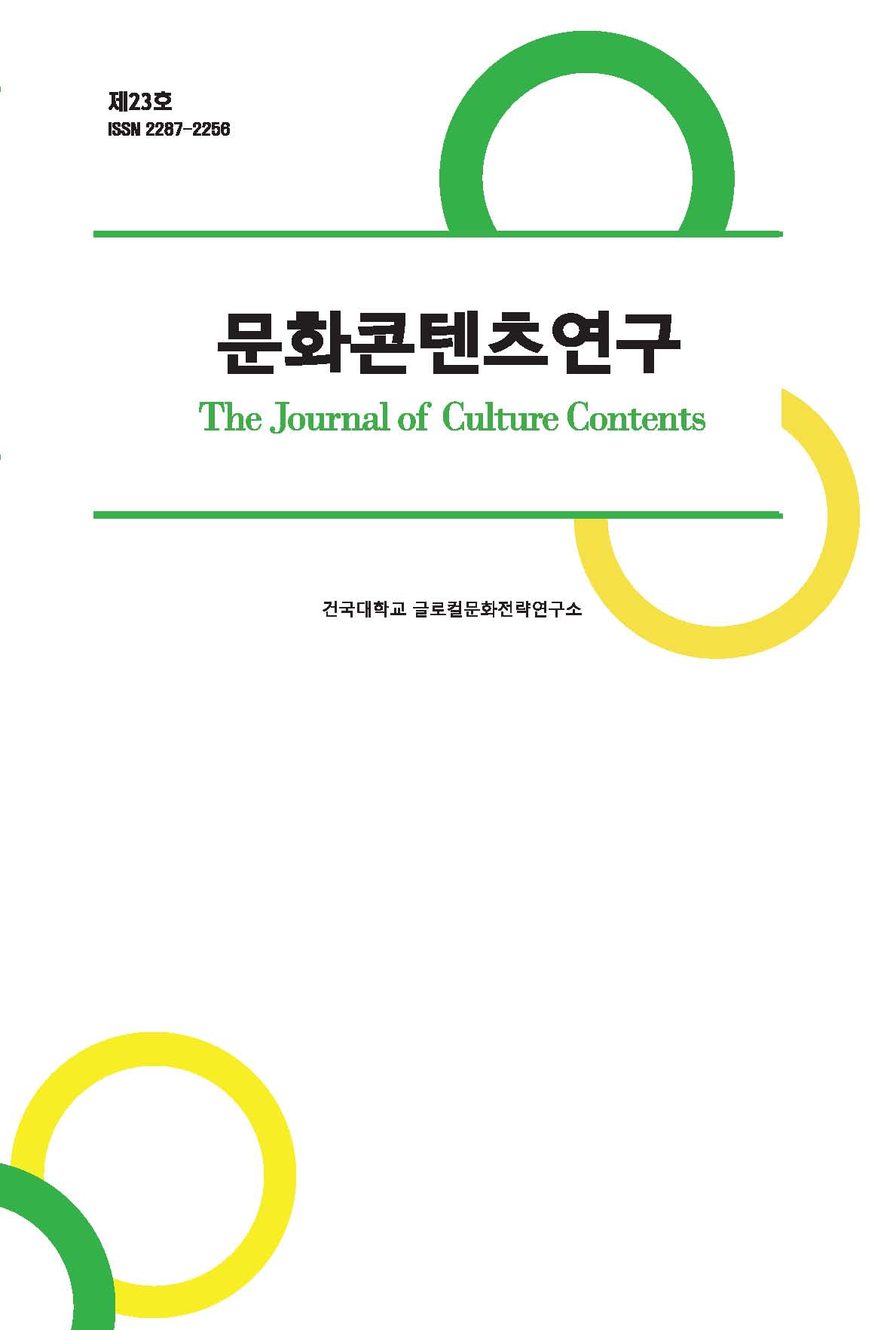Research Article
Abstract
References
Information
Changes in media environment and acceptance behavior of consumers entail the changes in content. Utilizing the Generative Model of Signification, this study tries to investigate the methods of concept design in the content remediation process. More specifically, it investigates the immediacy or hyper-mediacy, one of the characteristics of remediation, would have any differential impacts on the planning process of the remediation content, focusing on the smart media application, ‘tbs eFM digital magazine volume 4’, which was remediated from the FM radio content of tbs eFM. Firstly, the paper reconstructed the remediated content which is one of the nice tools in cultural semiotics. Secondly, investigating the three-phase structure analyzing model’s strength, last, analyzing the characteristics of the remediation of content. The planning process of ‘tbs eFM digital magazine volume 4’ using Greimas’s Generative Model of Signification can be divided as three-phase structure. The deep structure represents the core values are the improving English skill and the loyalty of the program. The discourse structure depicts the appropriate arrangements of interactive story-telling discourse structures by extracting various micro content. The surface structure is the visual story-telling focusing on image and multimedia and interactivity. This research showed the applicability of the Generative Model of Signification in the remediation process.
현대사회에서는 다양한 매체의 전환이 이루어지고 이를 사용하는 소비자의 수용환경도 빠르게 변화하고 있다. 현대의 디지털 미디어는 콘텐츠를 창조하고 이를 재사용하는 과정에서 창작자와 수용자 사이에서 상호작용을 통해 콘텐츠의 재매개(remediation)가 된다. 본 연구는 라디오 콘텐츠의 재매개 과정의 설계과정을 제시하고, 문화기호학적 분석 도구인 의미생성모델이 설계에 유용함을 제시한다. 이를 위해 콘텐츠 재매개에서 발생하는 특성, 즉 비매개(immediacy) 혹은 하이퍼 매개(hyper-mediacy)가 재매개 콘텐츠의 기획과정에 어떠한 영향을 주는지 고찰한다. 이를 위하여 첫째, 재매개 콘텐츠를 문화기호학의 분석도구인 의미생성모델을 통해 재구성하였다. 둘째, 의미생성모델의 3단계 구조분석이 매개의 어떠한 특성을 반영하는지 분석하였다. 셋째, 재매개 콘텐츠의 특성과 의미생성모델의 분석을 통해 재매개의 특성을 고찰하였다. 그레마스의 모델을 통해 재구성해 본 ‘tbs eFM 디지털 매거진’의 기획과정은 3단계로 구분할 수 있다. 첫째, 콘텐츠 수용자의 어학실력 향상과 콘텐츠 제공자인 tbs eFM의 인지도 향상이라는 핵심 가치가 심층구조이다. 둘째, 이를 기반으로 수요자가 선호할 수 있는 미시 콘텐츠들을 추출하여 상호작용적 스토리텔링 요소들을 구성하는 서사구조이다. 셋째, 이러한 서사구조를 활용하여 다양한 이미지와 시각적 스토리텔링으로 풀어낸 표층구조이다. 이 과정에서 기존의 콘텐츠를 새로운 콘텐츠로 재매개할 때 나타나는 하이퍼 매개성이 지속적으로 관철되고 개성적인 요소로 작동하였다. 디지털 미디어의 다양성과 급속한 성장에 대응하기 위해서는 기존의 콘텐츠 유통양식이나 단순한 확장방식에서 탈피하여 방송콘텐츠의 재매개와 새로운 매개방식을 활용한 구조변화를 기대한다.
- 강인애, 「구성주의 학습이론에 대한 고찰」, 『초등우리교육』 통권 제108호, 1999.
- 김영순․백승국, 「에듀테인먼트 콘텐츠 프로세스의 기호학적 전략」, 『정보과학회지』 제24권(제2호)(통권 제201호), 2006.
- 백승국, 「축제기획을 위한 문화기호학적 방법론」, 『인문콘텐츠』 제6호, 249~267쪽, 2005.
- 백승국, 「문화콘텐츠 개발을 위한 기호학적 분석 방법론」, 『기호학 연구』 제1권(제15호), 2004a.
- 백승국, 『문화기호학과 문화콘텐츠』, 다할미디어, 2004b.
- 송치만, 「기호학과 문화콘텐츠」, 『한신인문학연구』 제5집, 81-100쪽, 2004.
- 이병호, 「구성주의에서의 지식의 문제와 사회과 교육의 방향」, 『시민교육연구』 제29집, 제1호, 1999.
- 이산호, 「문화콘텐츠 분석과 기호학」, 『다문화콘텐츠연구』, 2006.
- 임종수, 「방송 콘텐츠의 OSMU 활용방안 연구」, 한국언론학회 『방송 콘텐츠의 지속적 활용방안 모색 세미나』, 2007.
- 정일형, 「N-스크린 환경에서의 콘텐츠 재매개: 웹툰 <미생>을 중심으로」 『사회과학연구』 제32집(제3호), 2016.
- Anderson, C., (The Long Tail: Why the Future of Business Is Selling Less of More), 이호준 역, 『롱테일 경제학』, 서울: 랜덤하우스, 2006.
- Bolter, J. D. & Grusin, R., (Remediation: Understanding New Media), 이재현 역, 『재매개: 뉴미디어의 계보학』, 서울: 커뮤니케이션북스, 2006.
- Owen, B. M. & Wildman, S., (Video Economics), 최양수 역, 『영상경제학』, 서울: 나남, 2004.
- Publisher :Research Institute of Creative Contents
- Publisher(Ko) :글로컬문화전략연구소
- Journal Title :The Journal of Culture Contents
- Journal Title(Ko) :문화콘텐츠연구
- Volume : 24
- No :0
- Pages :141-161
- DOI :https://doi.org/doi.org/10.34227/tjocc.2022..24.141



 The Journal of Culture Contents
The Journal of Culture Contents





